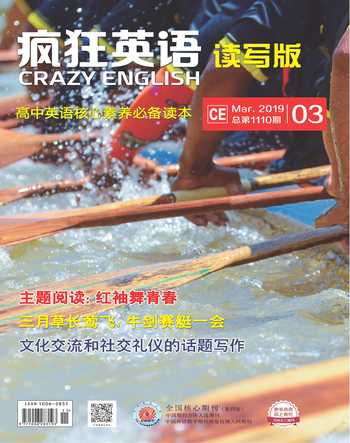In Pakistan, learning Chinese is Cool在巴基斯坦,学习中文很酷
韦恩东
如今,在巴基斯坦,学习普通话被视为通往繁荣的大门。在北京和伊斯兰堡于2015年签署启动中巴经济走廊文件之后,更多的巴基斯坦人开始学习中文。在过去几年里,学中文的巴基斯坦人已增长了十倍多。虽然将中巴文化联系起来可能不像学习一门语言那么容易,但这些学生身上映射着两国间更美好、更宽泛的未来。
难词扫障
1.Mandarin n. (中文)普通话;
2.sibling n. 兄弟姊妹;同胞
3.memorandum n. 备忘录;便笺
4.corridor n. 走廊;通道
5.supervisors n. 监督员;指导者
Saleem Abbas, a 17-year-old boy from northern Pakistan. Abbas' family has invested heavily in his education, hoping that eventual fluency in Mandarin will lead to a good job and allow him to help finance the education of his younger siblings.
In Pakistan, speaking Mandarin is now seen as a door to prosperity. “Chinese is the language that can make Pakistan prosperous and help Pakistanis get a job,” he says, “China can also help Pakistan move forward.” Many people began learning Chinese in the past few years, after Beijing and Islamabad signed a memorandum of understanding that launched the China-Pakistan Economic Corridor in 2015. It is an ambitious series of infrastructure(基礎设施) projects worth more than $50 billion. The mix of investment, loans and Chinese expert advice is transforming Pakistan with new roads, high speed rails, a port and power plants. Tens of thousands of Chinese have come to work on these projects, so there's a demand for translators, lawyers and supervisors who need to speak Mandarin.
At the university where Abbas studies, senior Mandarin lecturer Rashida Mustafa, says “Mandarin has been taught since the early 1970s. For most of that time, there were 20 students per class and three classes—two for beginners and one advanced. Most of the students were military officers.”
Now, there are 500 students studying Mandarin, and the university added morning and evening classes. From 10 teachers in 2014, they now have 40, alongside two volunteer teachers that the Chinese Embassy provides. In addition, the Chinese government and Chinese universities offered 5,000 scholarships to Pakistanis in 2016. China's hope is that some of the scholarship recipients(接受者) will return home to teach Mandarin and create a sustainable Pakistani network for teaching the language. Even without scholarships, it seems Pakistanis are flocking to study in China. In 2016, some 22,000 were studying there. A more than ten times increase has appeared over the past six years. Pakistanis rank as the fourth largest group of foreign students in China, after South Koreans, Americans and Thais.
Their experience sketches out something broader, although linking two cultures, bringing people closer, may not be as easy as just learning a language.
Complete the summary according to the text.
Saleem Abbas from northern Pakistan, with the (1) ______ (expect) of his family, is learning Mandarin now. With the China-Pakistan Economic Corridor (2) ______ (launch), there's a demand for Pakistanis who could speak Mandarin(3) ______(communicate) with Chinese.
The number of Pakistanis(4)______ (learn) mandarin has increased in the past six years. And efforts by the Chinese government and Chinese universities (5) ______ (make) to improve learning conditions.
Although it is not easy, these students' experience will make (6) ______ (contribute) to
link two cultures and bring people (7) ______ (close) between China and Pakistan.
I.Important vocabulary in the text
1.invest v. 投資
2.ambitious adj. 有雄心的
3.sustainable adj. 可持续的
4.flock v. 聚集;蜂拥
5.sketch out 概述;简述
II.Complete the following sentences in correct forms with the vocabulary given above.
1.The ______ young man relied on his friends to further his career.
2.The criticisms will not stop people ______ to see the film.
3.You mean it is wise to ______ in this project.
4.We need to have a more stable and ______ business model.
5.Give me a notebook and pencil and I'll______ what I have in mind.
6.The government will ______ an extensive public works program next year.

